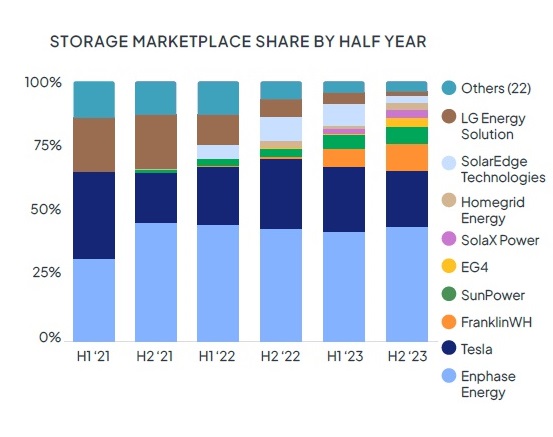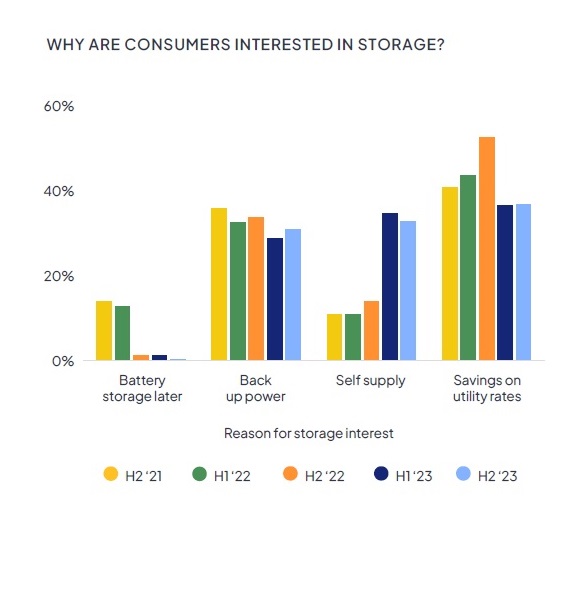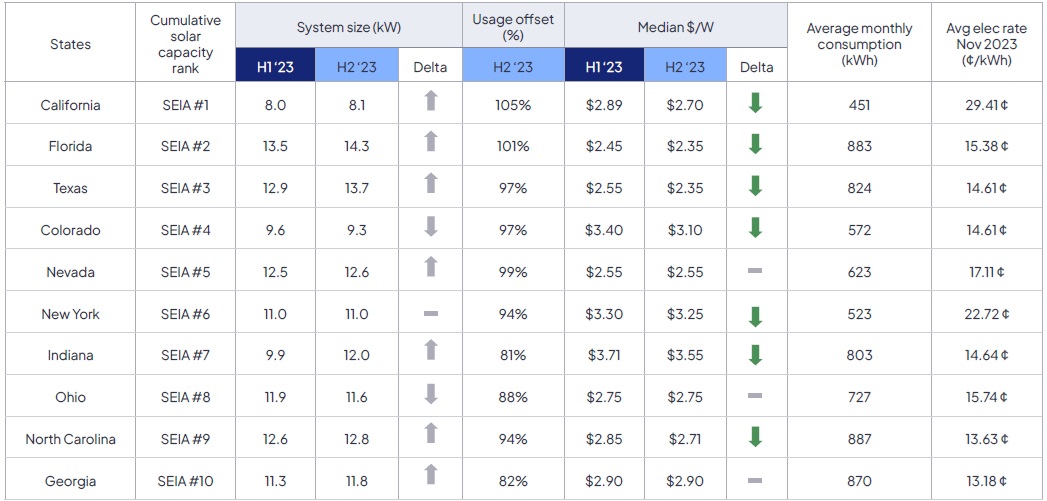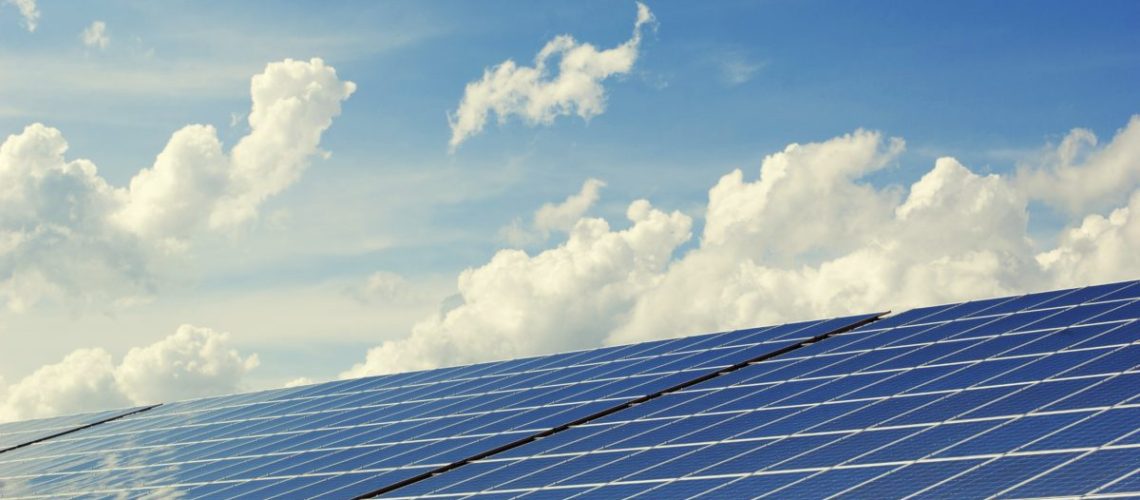The 18th edition of the EnergySage Marketplace Report finds the residential solar segment in the U.S. is rocked by persistent inflation, the California NEM 3.0 and rising loan fees. Yet prices have fallen and consumer interest in storage is strong.
The 18th edition of the EnergySage Intel: Solar & Storage Marketplace Report looks at pricing trends, equipment preferences, financing terms, consumer interest and more.
EnergySage, an online comparison-shopping marketplace for solar, provides solar quotes from local, vetted solar companies in 41 states and Washington DC. The marketplace report is compiled by assessing those quotes submitted by solar companies to shoppers throughout 2023, comparing the first half of the year to trends over the second half of the year.
A key finding is that despite inflation and increased financing fees, solar prices dropped for the first time since 2021, falling by 3.5% to $2.80 per watt. The report finds that the median price of $2.80 W in H2 2023 is in line with solar pricing from mid-2020, and 4.5% higher than the low point from summer 2021.
Recent price drops were offset by larger fees charged for lower interest rate loans. The most frequently quoted solar loan was a 25-year loan with a 3.99% interest rate. But the report found that the average fee on the most quoted loan product reached 47% of the cash project cost in the second half of the year.
Storage
Consumer interest in battery energy storage is up, with 61% of solar quotes on EnergySage including a battery in the second half of 2023—an increase of ten percentage points over the first half of 2023.
Quoted storage prices also dropped for the first time since EnergySage started tracking them in 2020, falling by 6.4% in the second half of the year. Previously the median price for batteries quoted on EnergySage increased during every six-month period, but that changed in second half of 2023. This drop in prices is driven by a 19% decrease in quoted storage prices in California, where the attachment rate has been 45% since NEM 3.0 went into effect. The report finds that in the first six months of 2023, Calif. had the lowest level of storage interest of any state on EnergySage.
The change in California’s net metering policy came after the original NEM helped the state become the leading rooftop solar market, achieving Governor Schwarzenegger’s million solar roofs initiative, and under NEM the state has since reached two million solar roofs. The Calif. residential solar market came to a screeching halt after the NEM 3.0 rulemaking decision lowered compensation for exported solar production by about 75%, thus making batteries an essential component of a residential solar project. Assemblymember Laura Friedman recently introduced a bill calling for the CPUC to re-evaluate net metering.
As storage installations increased over the last three years, the specific batteries quoted and installed through EnergySage have evolved rapidly, yet a few brand choices remain on top. Enphase and Tesla are the most quoted, while FranklinWH jumped from 1% of quotes in H2 2022 to 11% of quotes in H2 2023.
Enphase Energy recently launched the new Enphase Energy System with the IQ Battery 5P, and the company reports that its system is optimized to support the new NEM 3.0 rules by enabling self-consumption and exporting energy at the appropriate times to create maximum value.
Tesla launched its latest battery, the Powerwall 3, last September. The FranklinWH integrated battery and control system was launched in 2022.
The drop in pricing is driven by Tesla and FranklinWH. These two brands were included in one-third of quotes and were priced similarly to each other at around $1,100/kWh-stored. Only one battery brand, LG Energy Solution, was included in more than 1% of quotes and priced below $1,000/kWh-stored on average in the second half of the year.

Seven out of 10 solar shoppers requested battery quotes on EnergySage throughout 2023. For the most part, very little separated the three drivers in the second half of 2023: main
financial savings, maximizing self-consumption, and backup power each accounted for more than 30% of consumer interest in storage. The NEM 3.0 factor is evident in the Marketplace analysis of California shoppers because it wasn’t until H2 2023 when interest in energy storage spiked. In fact, prior to that Californians had the lowest interest in backup because of the favorable net metering rates. After rates were slashed by NEM 3.0, the state saw the fifth-highest storage interest rate in the country with four out of five EnergySage shoppers requesting storage quotes.

Pricing by state
EnergySage looked at Marketplace quotes for the second half of 2023 for the 10 states with the most cumulative solar electric capacity installed through the third quarter of 2023 based on data from the Solar Energy Industries Association (SEIA) and Wood Mackenzie.

According to SEIA the top five solar states are: California, Florida, Texas, Colorado, and Nevada. All of the top five, with the exception of Colorado, had median quoted prices below the national median price. In California half the quotes on EnergySage were priced below $2.75 W in the second half of the year (up from 20% in H1), driven by companies trying to improve solar economics when NEM 3.0 became policy.



